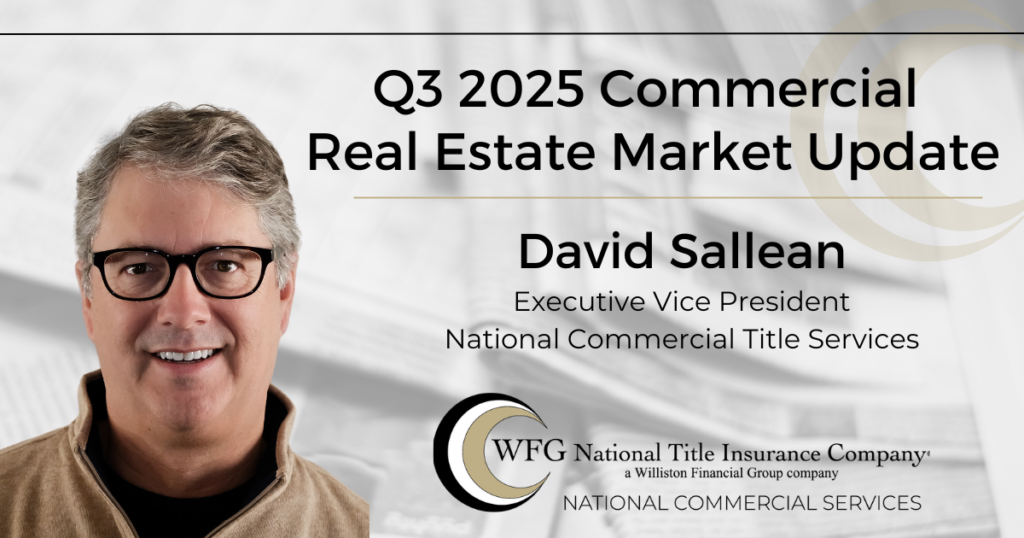
The Federal Reserve cut the federal funds rate by 25bps in September 2025, bringing it to the 4.00%–4.25% range, which was in line with expectations. It was the first reduction to take place since December 2024. Fed officials, deeming the labor market as weakening, felt the move was appropriate. However, there were continued concerns regarding inflation. Most of the Fed members considered it likely that further policy easing would be appropriate by the end of the year, with two rate cuts as the most likely possibility.
The immediate impacts on CRE include lower costs for floating-rate loans and the potential reopening of development pipelines for projects that had been paused due to high borrowing costs, particularly where construction financing is a major expense. Most participants were relieved to see the rate cut, which had been highly anticipated as a catalyst to jumpstart commercial activity after a slowdown following the rate hikes of early 2022 through mid-2023. While the overall reaction was positive, Fed member comments suggesting that additional rate cuts may take place by the end of 2025 have left the market cautious, with investors remaining on the sidelines in anticipation of further easing.
The looming wave of maturities, or perhaps more of a wall at this point, is expected to grow through 2027. Lower borrowing costs should support refinancing activity for loans originated in a higher-rate environment, coinciding with improving occupancy rates and a slowdown in new development across many asset classes. Another favorable condition is that distress has been less widespread than during and immediately following the Great Recession, except for the office sector, which continues to struggle with increased special servicing and delinquencies.
Sector performance:
- Industrial continues to have high occupancy rates and low delinquency levels. While industrial might have peaked, investor interest is still high, and there are low barriers to refinancing at this time. Industrial is still considered a safe haven.
- Multifamily is also a relatively safe haven, demanding relatively low borrowing costs. It is also highly location-specific, with many markets still demanding more affordable housing. Continued high construction costs are a headwind in this segment.
- Retail has experienced a lack of new construction, with deliveries falling to 25-year lows. This has become the primary driver of tight availability and increased competition for quality space. At the same time, consumer spending continues to support retail sales, fueling a resurgence in brick and mortar. Together, these have strengthened investor confidence in the sector. Office continues to be the wildcard sector, with success heavily dependent on location, amenities, building quality, and whether the office aligns with current return-to-office trends.
What can we look forward to in Q4 2025 and into 2026?
If the Fed follows through with cutting rates, this could encourage renewed enthusiasm in CRE deals, particularly as spreads compress and debt becomes more accessible. Alternatively, if inflation creeps higher or macro uncertainty reignites, the Fed may may delay rate cuts. In that case, a substantial portion of borrowers could find themselves unable to refinance or extend debt on favorable terms, potentially leading to rising distress, forced sales, or defaults, particularly among weaker assets or markets. In today’s highly politicized environment, whatever unfolds will play out in real-time across the news cycle. The next Fed meeting is less than three weeks away, with odds markets currently predicting a 94% probability of a 25-basis-point cut. Another meeting follows in December. Stay tuned.